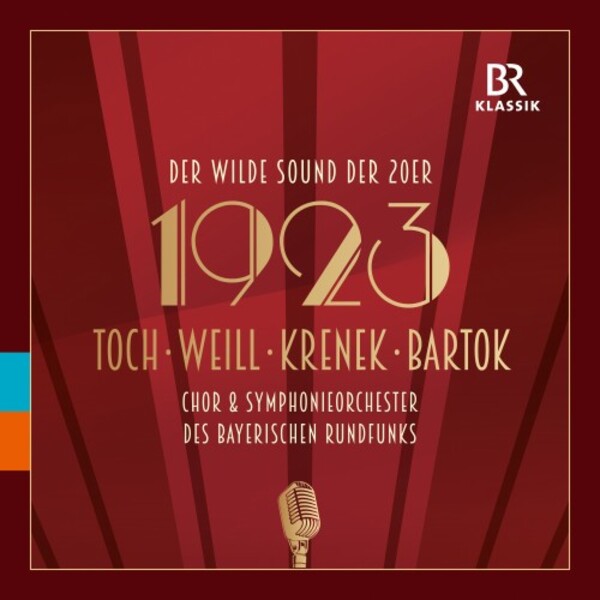
The Wild Sound of the 20s: 1923 - Toch, Weill, Krenek, Bartok
£13.25
In stock - available for despatch within 1 working day
Despatch Information
This despatch estimate is based on information from both our own stock and the UK supplier's stock.
If ordering multiple items, we will aim to send everything together so the longest despatch estimate will apply to the complete order.
If you would rather receive certain items more quickly, please place them on a separate order.
If any unexpected delays occur, we will keep you informed of progress via email and not allow other items on the order to be held up.
If you would prefer to receive everything together regardless of any delay, please let us know via email.
Pre-orders will be despatched as close as possible to the release date.
Label: BR Klassik
Cat No: 900206
Format: CD
Number of Discs: 1
Release Date: 6th January 2023
Contents
Artists
Anna-Maria Palii (soprano)Natalie Schwaabe (flute)
Bettina Faiss (clarinet)
Jesus Villa Ordonez (bassoon)
Ursula Kepser (horn)
Korbinian Altenberger (violin)
Ben Hames (viola)
Lukas Richter (double bass)
Guido Marggrander (percussion)
Chor des Bayerischen Rundfunks
Symphonieorchester des Bayerischen Rundfunks
Conductors
Cristian MacelaruHoward Arman
Works
Dance Suite, Sz77 BB86Mixed Choruses (3), op.22
Tanz-Suite, op.30
Frauentanz, op.10
Artists
Anna-Maria Palii (soprano)Natalie Schwaabe (flute)
Bettina Faiss (clarinet)
Jesus Villa Ordonez (bassoon)
Ursula Kepser (horn)
Korbinian Altenberger (violin)
Ben Hames (viola)
Lukas Richter (double bass)
Guido Marggrander (percussion)
Chor des Bayerischen Rundfunks
Symphonieorchester des Bayerischen Rundfunks
Conductors
Cristian MacelaruHoward Arman
About
The composer Ernst Toch from Vienna experienced the crisis year of 1923 in Mannheim, where his Dance Suite for flute, clarinet, violin, viola, double bass and percussion, op.30, was premiered on 19 November with great success. In this work, commissioned for the expressive dancer Frieda Ursula Back who choreographed its premiere, Toch was able to realise his interest in cross-disciplinary collaboration and new forms of expression. His virtuoso and imaginative use of instruments is one of the most fascinating aspects of the suite.
The Frauentanz for soprano, flute, viola, clarinet, horn and bassoon, op.10, by Kurt Weill, written in the summer of 1923, reflects the interest in chamber music line-ups typical of the time. The decisive factor was not only a new ideal of sound and expression, but also the experience that in times of crisis, pieces with small ensembles had better chances of being performed. Weill’s song cycle quickly gained recognition. After its successful Berlin premiere in February 1924, it was published a few months later as the young composer's first work in print and was his most frequently performed piece until 1927.
The enormously productive Ernst Krenek had found essential impulses for his work in Berlin; when the crisis came to a head in the summer of 1923, he returned to Austria, where in October he composed the Three Mixed Choruses a cappella, op.22, on poems by Matthias Claudius. Krenek designed these folksong-like works written by a lyricist from the epoch of Empfindsamkeit as parables, critically reflecting and commenting on contemporary experiences and developments.
For the festive concert celebrating the 50th anniversary of the unification of the cities of Buda and Pest to form the capital and residence city of Budapest in the autumn of 1923, Béla Bartók created his Dance Suite for orchestra - a "rather touchy issue", as the internationalist-minded composer explained in a private note. His music ingeniously thwarted the cultural-political intentions of his "ultra-Christian-nationalist" patrons. After chamber music works, a large orchestral work concludes the programme of this CD.
Error on this page? Let us know here
Need more information on this product? Click here